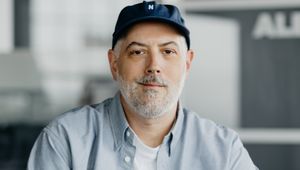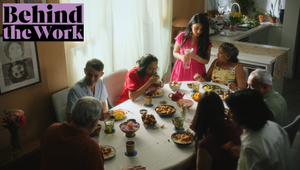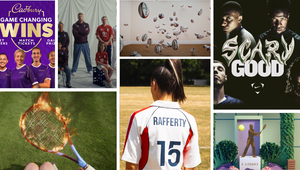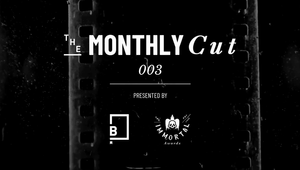
Andy Morley Wants Culture-Led Work That Comes With “More Risk, But Much More Reward”

When Uber Eats eventually moves away from its ‘Get Almost, Almost Anything’ brand platform, Andy Morley wants its successor to closely resemble it, ensuring the transition is as seamless as that from ‘Tonight I’ll Be Eating’ to ‘Get Almost, Almost Anything’.
Uber and Uber Eats’ APAC director of marketing knows the brand may run into future limitations with ‘Get Almost, Almost Anything’, just as ‘Tonight I’ll Be Eating’ stopped serving the business’ growth ambitions as it pushed into the grocery category.
“We spent two years before we moved to 'Get Almost, Almost Anything' trying to get 'Tonight I'll be Eating' to talk about more than just delivery food,” he tells LBB.
“And it didn't work. Because we built such equity in that platform, people thought that they knew whatever we were telling them, and they just embraced the entertainment. They almost ignored the message ... So we had to make the switch.
“But when we did that, we wanted to change as little as possible. And so all of those things were very deliberately laid out from the start, around talent, tone of voice, type of humour that we were bringing in, the type of structure, narrative storytelling. We wanted to stay close to self-deprecating humour, and then use of DBAs [distinctive brand assets], like doorbells, the green bag, in very similar ways.
“At some point, we may have to transition on from 'Get Almost, Almost Anything'. And if we do, that will be the mandate as well, around how you continue to pass the baton in a seamless way.”
One constant across the two platforms is the brand’s investment in A-List celebrity talent. ‘Tonight I’ll Be Eating’ famously featured Kim Kardashian, plus Victoria and David Beckham, while stars like Nicola Coughlan, Jason Alexander, and Cher have appeared in spots for ‘Get Almost, Almost Anything.’
Celebrity-fronted campaigns are more likely to go viral, “and that's going to give you a much bigger, outsized impact than just being able to buy eyeballs through the traditional channels,” Andy says. “It's why we invest in big talent and have a lot of entertainment value.”
He expects his agencies to ensure Uber’s work is among the small pool of ads that grab attention. “Because every year, more and more customers are getting better at blocking out the noise and ignoring ads in their traditional form, and so fewer things actually get noticed. And we want to make sure that our things are the few things that get noticed.”
However, he wants Uber’s cultural influence to extend well beyond blockbuster campaigns centred around a hero film. He references last year’s collaboration between Uber Carshare and F1 driver Valtteri Bottas, led by Poem, and the annual Red Cross Clothing Drive which sees Uber drivers collect clothing donations. Both are examples of the type of work of which he wants to do more.
”I believe in two streams of work. Yes, there's still a role for big campaigns. You've got to fill your calendar with these big things that you can build those consistent drum beats and build your compound creativity off. But on the flip, there's an increased need for non-traditional attention spikes, where you can tap into culture in unique ways. They're harder to do, and it comes with more risk, but much more reward.
“I am really keen to keep on increasing the amount of these that we do, because in a new world that's so tapped into culture, there's increased blurred lines between comms and marketing in a positive way. If you challenge yourself to do something so culturally relevant that the press will want to talk about you, that will probably be the thing that will make social media audiences want to talk about you and be viral.”
Smaller, culture-led work and big, integrated campaigns both stress the necessity of “platform-first excellence.” When done well, fit-for-channel executions strengthen Andy’s “huge belief in compound creativity.”
“It's all very good and well to have a really cool breakthrough creative idea, but it needs to surface in very, very different ways on different platforms to be successful at driving the full impact.”
While most current creative conversations feature some mention of artificial intelligence, accelerated by “a big push on cost base across the industry”, Andy thinks the “noise is probably bigger than the reality right now.” He doesn’t see it significantly impacting how Uber thinks about, or works with, its external agency village, comprising Special, EssenceMediacom, Hello, and Poem.
“We're upskilling our team on usage of AI, but I still really heavily believe in the role that only humans can play in the marketing and creative process,” he stresses.
“There's efficiencies for all of our day jobs ahead in this. I don't think that's going to be [a] substitute for some of the roles, that just means we're going to be able to run faster, and we're going to need to run faster because other people are going to be running faster.”















